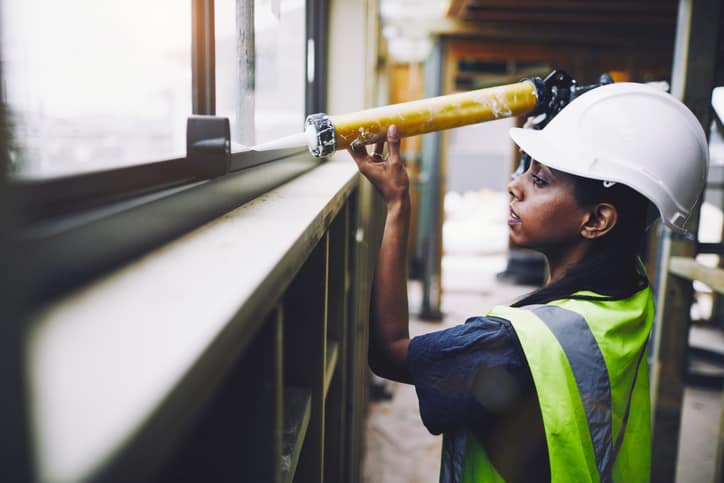Caulk appears everywhere. This flexible material is integral to structural integrity in your home or a commercial building. It protects from outside elements by sealing less than one-quarter-inch-wide air leaks like cracks, gaps, or joints. That’s why part of a building envelope inspection involves checking the condition of a structure’s caulk. Yet, how often should you inspect your building’s caulk? Find out here.
Why a Building’s Caulk Matters
Caulk is meant for your building’s protection. However, it’s important to note that this material’s strength can’t last forever. Without proper caulk maintenance, it eventually deteriorates over time and can result in cracks or peeling. When this occurs, it leaves your building’s interior vulnerable to potential water damage or pests. The degradation of your caulk contributes to structural weakness and can impact you in other ways. For instance, your building can become colder from cooler air drafts seeping through cracks and gaps. In turn, you will naturally raise the heat in the building to help keep everyone warm. However, this good intention is punished by paying higher energy bills. With building envelope inspection, you can check and rectify these caulk issues. When these gaps and cracks get proper caulking done, it helps to retain heat inside the building and will save you up to 5-10% of your building’s heating costs in only an hour or two. In essence, inspecting your building is worthwhile in the long run.
Areas in Need of Caulking
We understand why proper caulking is necessary and important. Though what areas need caulking? After all, an inspection is only possible by properly identifying where the caulk is.
See a few of the areas that are typically inspected for caulk condition here:
- Doors
- Windows
- Sidings
- Roofing joints
- Balcony joints
- Air vents
- Exterior lights
- Surrounding plumbing
For a building’s interior, the most obvious areas for caulk inspection are doors and windows. After all, they’re the ones that give you control of what can go in and outside the building. Cracks and gaps can occur from them and lead to cold air coming in easier. Meanwhile, a building’s plumbing is also considered. Checking sinks and toilet caulk can help prevent potential water damage.
As for a building’s exterior, the caulk for siding and roof joints is important. These areas are the most susceptible to the elements and get worn down from years of varying weather patterns and severity. Secured caulking ensures utmost protection by preventing certain damages (e.g. moisture coming inside).
It’s also best to check air vents and exterior lights since deteriorating caulk in those areas creates free real estate for pests to enter and nest.
In addition, it’s important to note that all these areas with caulk are all different. They may be made from the same base materials, but each has unique properties that work best for certain areas. It depends on whether that caulking material adheres to a surface, its flexibility, and how easily it spreads and fills gaps.
Keep in mind these types of caulking materials so it complements the area’s caulking.
These include the following:
- Silicone sealant
- Latex
- Rubber
- Polyurethane
When to Inspect Building Caulk
There is no concrete answer regarding how often a building must have its caulk inspected. If anything, it all depends on a few factors.
For instance, newly constructed buildings take a few years to settle into the foundation. They may shift during this time, so it’s best to monitor caulking carefully. In this case, it’s best to inspect caulk in the first years after construction. Meanwhile, for an older building, caulk can last for five years at the most. But ultimately, it’s typically best not to wait too long on inspection and get it done if there are significant signs of caulking issues.
If you’re planning to get an inspection, the best time you can do so is between spring and fall. Why is that? These seasons allow the caulk to set in properly since it requires time to dry. It’s why there are better times to do so than winter since it can impact the caulking from the cold and wet snow it brings.
Caulking is an important material used in all buildings for structural support. With a building envelope inspection, any caulk issues can get addressed and avoid potentially costly repair damages in the future. Preserve your building’s integrity and your wallet by inspecting your caulk today!

Recent Comments